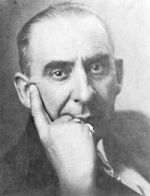So they gave him a tiny half-spoon of water. They put it into the mouth and he was so pleased and everyone was so pleased they were looking with their mouth open, and it was not vomited. He asked for more and then he drank the whole glass, you know. After this they tried to give him a little milk. He could retain this very well and can you believe, two days later the drain was removed, for there was no pus to be drained. And five days later he was leaving the hospital cured not knowing who had cured him, what had cured him, only that he was cured. And his parents were so pleased. The other assistants did not know what it was, the nurse did not know what it was. But my assistant went to the professor and said, “I must tell you. Doctor. I gave him two homoeopathic remedies.” And the professor was very intelligent. He said, “If ever I am sick I will take a homoeopathic remedy.” (Prolonged applause).

